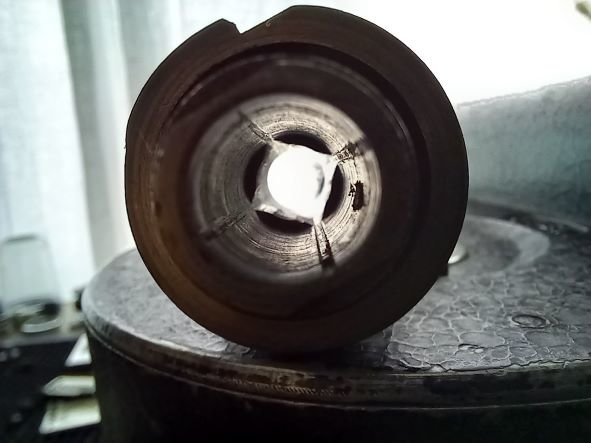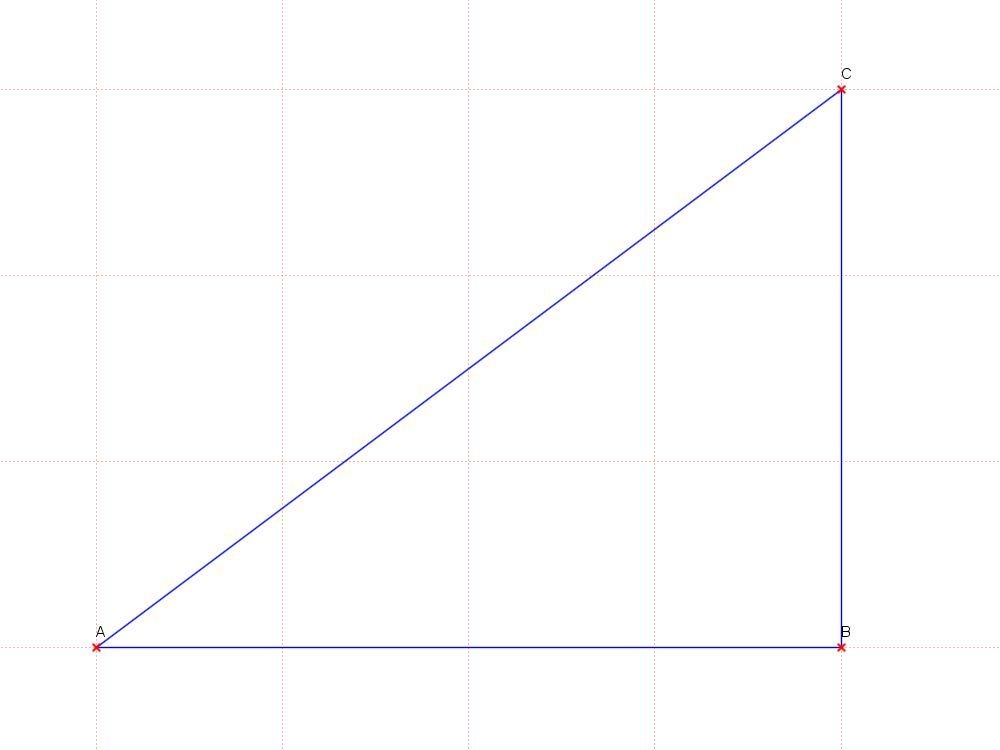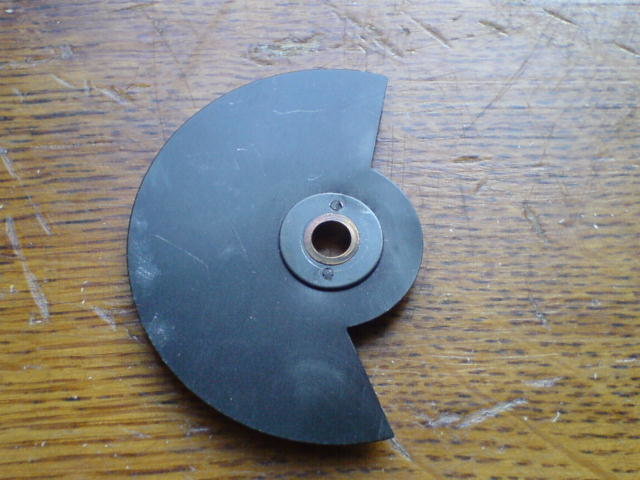-
Posts
2,588 -
Joined
-
Last visited
Everything posted by Simon Wyss
-
Find a wooden legs ciné tripod with a good fluid head, like a Universal (Sydney), a Miller, an Arri, whatever. See that you have a spirit level with it.
-
Yes, you can, but that has nothing to do with lenses. Try Gigabitfilm for a smooth, grainless image. Think about colour rendition when you search an old photographic look. Panchromatism was not available until around 1900. Calotypes are absolutely not similar to Daguerreotypes. Please read some books or at least two or three articles in the web. To really imitate 1840 you can put a simple close-up lens on a c-mount tube. A 40 dioptres singlet about an inch away from the film would be a normal. The most primitive (in the proper sense) film is positive print stock such as Orwo PF 2 and Eastman 7302. Start with ISO 10 on your meter.
-
Boy, there is nothing like Daguerreotypes. It is a unique photographic process. You juggle with expressions without knowing anything about them. Let me suggest you simply load that camera and make your experience with what you have. Cine lenses that would fit old photographic techniques do not exist. Motion pictures became possible exactly by a material which superseded plate still photography, prefabricated flexible film. Only the perforation was added shortly before shooting, and not always. So the simplest lens you can find and screw onto your cam will never lead you into the realm of 19th century photography. You would have to employ a rapid camera that holds a silvered and sensitized brass plate. What you can imitate or better: revive easily is 1930s or 1940s cinematic styles. No problem, the cameras, the lenses, and matching black-white films are available. It will be a tad trickier to install lights from the time, although not impossible. Not to forget the fact that before 1954 no cinema except the first one in Germany was equipped with Xenon arc lamps. Any historically correct attempt at movies from before mid-fifties demands carbon-arc light in projection. In spite of all this, it is good you joined the forum. Be welcome
-
You need to learn to write and draw. Black and white is drawing, colours are painting.
-
Why do you establish a difference between full frame and Academy? The 1929 AMPAS standard with sound is only the continuation of the aspect ratio without sound track. One kept the screens in 4-to-3 format. The minor camera aperture offset is not to be dealt with. I screen Academy or normal sound films with 15,75 × 21,1 mm projector gates (.620" × .831"), 16mm with 7,2 × 9,6 mm (.284" × .378"). Exact cutout defined by screen mask Stories like GWTW and The Artist (and more) not as big on the print as possible are far more detrimental to film cinema than any video attack. Sure, the way movies are photographed is also a factor, the way movies are edited, too, but according to Marshall McLuhan is the medium the message. Xenon discharge lamp light and HiFi sound are not cinematic. A wavy picture due to continuous printing procedure kills more about the film than most of us would admit. I know, I tend to run off topic, but today’s cinema does not have the means to regain its lost territory. It’s been so easy for video with an absolute steadiness, with a most precise frame rate, with one clear aspect ratio for a long time (funnily 1.33), with no splices. Polyester base film became available in 1950. Eastman-Kodak got licensed to it in 1955. It took the industry about 40, forty, years to pass from acetate to polyester, and still one cuts and splices and loses content! I congratulate all the people who show a Technicolor imbibition print with high-intensity carbon arc light together with Petzval design lenses, who adapt the light output to a black-and-white print, I mean a silver print, who do not offer popcorn in their house but toffees and salty peanuts. Those who produce prints having a 4:3 image within the 1.85 frame should be shot with hot cheese.
-

Low budget 35mm Cameras with Registration pins?
Simon Wyss replied to Trevor McClung's topic in 35mm
Precisest movement still is Bell & Howell’s shuttle gate. Doubled by the Wall Then comes the Newman-Sinclair clapper gate. Then you have the Mitchell family with its descendants down to the youngest Arricam, Vinten-Newall-Moviecam-Ultracam-Leonetti-Cinema Products-Arritechno-Photosonics-Cunningham-Simplex Centfox. Let’s not forget the Debrie Grande Vitesse with up to 240 f. p. s. under moving register pins. Little Debrie Sept has moving register pins, too. Unfortunately in a soft alloy, so in most cases worn out Debrie Parvo in aluminum housing from 1921 on, also Askania Z (a copy of the former), the Italian OG 300, and the Czech and Soviet studio cameras -
-
Not by chance did 4:3 become cinema’s primary image aspect ratio. The triangle 3-4-5 is the most tension-loaded rectangular one defined by the smallest whole numbers. It sits withing the dynamic motion picture. Still photography depends on our unconscious tendency to depict within a quiet frame. Naturally pictures with an aspect ratio around the golden section are more often in use here. That’s about how I’d explain the thing.
-

Question about Kern Macro Switar 26mm f1.1 RX C-mount Lens for Super 16 use
Simon Wyss replied to Dan Berube's topic in Bolex
So much politeness, awesome! Confusion about preset and non-preset diaphragm? See, the ones have that lever that allows you to set a stop to the diaphragm ring, the other lever. The older ones don’t have it. There’s no difference to the rest of the lens by this. If the 26-1.1 Switar is apt to Super-16 I can’t tell. -
United States Patent Office Hannibal Goodwin, of Newark, New Jersey Photographic Pellicle and Process of Producing Same Specification forming part of Letters Patent No. 610,861, dated September 13, 1898 Application filed May 2, 1887 United Stated Patent Office Henry M. Reichenbach, of Rochester, New York, Assignor to the Eastman Dry Plate and Film Company, of Same Place Manufacture of Flexible Photographic Films Specification forming part of Letters Patent No. 417,202, dated December 10, 1889 Application filed April 9, 1889 These are the headings for bibliographical purposes. The most important papers of our business. I value photochemical imagery.
-
1) zoomer plus proche/plus loin 2) centrer le plan 3) espace au dessus la tête/les têtes 4) course gauche/droite 5) espace du regard 6) incliner en haut/en bas 7) pivoter
-
Who wants to replace the cinematographer, the cameraperson? Fools rush in . . .
-
Weʼd lose vagueness, uncertain terms (of endearment ?), all that guessing and the estimation inherent in physical processes. Everything besides strict calculation, everything not undergoing rationalism. George Eastman found himself in a cinch in 1893 when he learnt that his film deteriotated within a few months. Nobody could find anything to explain the problem. From a cloud of guessing emerged William Stuber with a solution. It is said that it remained his secret. I think the making of films has to do with a stubborn cohesion with one big secret, from raw stock manufacture to projection: the human has room to play her and his role with her or his senses. Sense of proportion, the timing on body rhythms, heartbeat and breath and emotions. Everything beyond mental control. That is why I hate chess. Stupid 64 squares, boring calculatio. Chess board or pixels, all the same.
-
One might be not aware of the fact that a new generation of lab initiatives is taking over. There are at least 30 independent motion picture film laboratories active in Europe, from so-called artistic grounds over enjoyment to tough commercial labour. Old printing machines are being put back to service — I have a 1921 Debrie Matipo in perfect working order — fresh ideas come to life. The Artist is an example for the viability of film, although not true black and white and not full frame, even of film without synchronous dialogue.
-
Funny combination of an older sawn-off housing with a post 1963-64 mechanism that has the 1-1 axle and the single-frame functions knob.
-
One single lens, we are in the Renaissance. Two lenses, we are in the time of the invention of photography. Three lenses, we are in the 1890ies. The triplet is already an anastigmatic design. Four lenses, we have the Petzval type of 1840 and the Tessar type of 1902. These make for about the half of the trade. The standard speed Wollensak Raptar is a Tessar design. Many a modern point-and-shoot camera bears a four-element lens. Many projection lenses in cinemas used to be Petzval children until after WW II. Five lenses, we have an economically well balanced starting point. Kern Pizar five-element lenses produce pictures as good as Six lenses, like all those double-Gauss designs such as the Zeiss Planar of 1896 and its descendants. Here we are with cinema taking lens constructions up until the 1970ies. Seven lenses, we have additional freedom of design but start to need an electronic computing device for the calculation. Todayʼs cinema projection lenses have seven free standing elements. Eight and more elements, sometimes 20 or more, with wide-angle, retrofocus constructions, zoom, and very fast lenses Anti-reflection coating since WW II, inventions around 1935 My pet is the simplest lens that provides me with an undistorted, sharp image. Can be a triplet 1:3,5, can be a mirror objective 1:5,6 (1:√32).
-

16mm stock without anti-halation backing?
Simon Wyss replied to Joseph Curran's topic in Film Stocks & Processing
Anti-halo backing, actually soot-blackened gelatin, is a matter of colour films. Kodachrome had it, Agfacolor, modern films have it. If youʼre looking for black-and-white stock with a colourless base you have Agfa-Scala 35mm (5 ft. only), anti-halo subbing, acetate Fomapan Reversal 35mm/16mm/8mm, anti-halo subbing, acetate Gigabitfilm 40 35mm/16mm, anti-halo integrated, polyester Orwo DP 31, anti-halo subbing, polyester Eastman x366 35mm/16mm, acetate or polyester Eastman x363 35mm/16mm, acetate Some sound recording films 35mm/16mm All print films -
Peter, every black-and-white stock can be inversed. Orwo UN 54 is a common negative film like Ilford FP 4 or Kodak PXN. Itʼs got a grey base which covers highlights, so for nice projection there is only Fomapan R as a real reversal stock. Agfa-Scala would be the other such film with an antihalo subbing and a colourless base.
-
Camera upside-down, action backwards
-
Chris, oh! The distance I mean is along the optical axis, the shutter away from focal plane and film towards lens. Hereʼs a picture of a Revere 103 shutter. The trailing edges are cut not radially but angled. This is to compensate across the aperture but has nothing to do with the angle shortening as mentioned above. There is another point about Paillardʼs tabellae, that is they rounded figures off with regard to — films. Yeah, photochemical films react differently to increasingly shorter exposure times but in general more or less in the same sense. Perhaps you have noticed sometimes that collapse of the picture with fades. Times beyond 1/500th second or so result in strong underexposure. Depends on the type of stock (originating, duplicating or release positive), on the mechanism guiding the variable shutter in the (printer) camera, and on the overall conditions of the transition.
-
I am sorry to have thrown that at you like nothing. See, if a film movie cameraʼs shutter really were in the focal plane which it apparently canʼt weʼd have the exact opening angle. Due to physical necessity we have the shutter somewhat off, about three millimeters with the Paillard-Bolex H cameras, by which fact, in every camera, a smaller angle becomes effective. Every point in the focal plane is given light and obscured rather in a fading manner behind kind of unsharp shutter edges. Do continue to calculate with 135 degrees for Bolex H Reflex. Itʼs not Bolex specific. We could easily talk about Beaulieu R 16 details or the 1923 Filmo.
-
Truth is that the shutter opening angle is 144 degrees but only about 135 degrees are effective due to the distance shutter-film.
-
http://en.wikipedia.org/wiki/List_of_motion_picture_film_stocks




